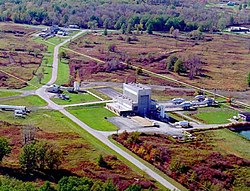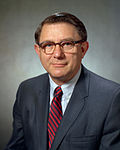 | |
 | |
 Aerial view of Glenn Research Center at Lewis Field | |
| Agency overview | |
|---|---|
| Formed | 1942 |
| Preceding agencies |
|
| Jurisdiction | Federal government of the United States |
| Headquarters | Brook Park, Ohio, U.S. 41°24′46″N81°51′45″W / 41.412843°N 81.862399°W |
| Agency executive |
|
| Parent agency | NASA |
| Child agency |
|
| Website | nasa.gov/glenn |
NASA John H. Glenn Research Center at Lewis Field is a NASA center within the cities of Brook Park and Cleveland between Cleveland Hopkins International Airport and the Rocky River Reservation of Cleveland Metroparks, with a subsidiary facility in Sandusky, Ohio. Its director is James A. Kenyon. [1] Glenn Research Center is one of ten major NASA facilities, whose primary mission is to develop science and technology for use in aeronautics and space. As of May 2012 [update] , it employed about 1,650 civil servants and 1,850 support contractors on or near its site.
Contents
- History
- Facilities
- Neil A. Armstrong Test Facility
- Icing Research Tunnel
- Zero Gravity Research Facility
- Developments
- Aeronautics science and technology
- Space science and technology
- Contributions
- Education
- Future
- Center directors
- NASA Glenn Visitor Center
- See also
- References
- External links
In 2010, the formerly on-site NASA Visitors Center moved to the Great Lakes Science Center in the North Coast Harbor area of downtown Cleveland.



















